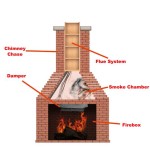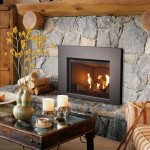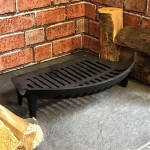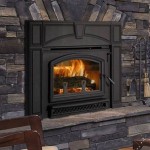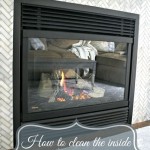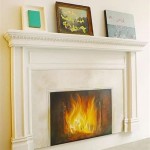```html
Gas Fireplace Repair Ottawa: A Comprehensive Guide
Gas fireplaces offer a convenient and efficient way to add warmth and ambiance to homes in Ottawa. Unlike traditional wood-burning fireplaces, gas fireplaces require minimal upkeep and provide instant heat. However, like any mechanical appliance, gas fireplaces can experience issues over time, necessitating professional repair services. This article provides a comprehensive overview of gas fireplace repair in Ottawa, covering common problems, diagnostic procedures, repair techniques, and preventative maintenance strategies.
The city of Ottawa experiences harsh winters, making a fully functional gas fireplace a valuable asset for homeowners. When a gas fireplace malfunctions, it can disrupt comfort and potentially pose safety risks. Therefore, understanding the common causes of these malfunctions and knowing how to address them is crucial. Selecting a qualified and experienced technician for gas fireplace repair in Ottawa is also of paramount importance to ensure safety and proper functioning.
Common Gas Fireplace Problems
Several factors can contribute to gas fireplace malfunctions. Identifying the specific problem is the first step in initiating the repair process. Common issues include:
Pilot Light Problems: A pilot light that frequently goes out, or fails to ignite altogether, is a prevalent issue. This can be caused by a dirty pilot assembly, a faulty thermocouple, or a problem with the gas supply. The thermocouple is a safety device that senses the pilot light's flame and allows gas to flow to the main burner. If the thermocouple is not functioning correctly, it will shut off the gas supply, extinguishing both the pilot light and the main burner.
Ignition Issues: Even if the pilot light is lit, the main burner may fail to ignite. This can be due to a faulty igniter, a blocked burner port, or a problem with the gas valve. The igniter is responsible for creating the spark that ignites the gas. A blocked burner port can prevent the gas from flowing properly, hindering ignition. The gas valve controls the flow of gas to the burner, and if it is defective, it may not open properly.
Gas Odor: The presence of a gas odor, even a faint one, is a serious safety concern and requires immediate attention. It could indicate a gas leak, which can be potentially explosive. In such cases, it is imperative to evacuate the premises immediately and contact the gas company or a qualified gas technician.
Soot Buildup: Excessive soot buildup on the glass or surrounding areas can indicate incomplete combustion. This can be caused by a lack of oxygen, a problem with the gas-to-air mixture, or a blocked vent. Soot can also be a fire hazard if it accumulates excessively.
Unusual Noises: Strange noises, such as clicking, hissing, or popping sounds, coming from the fireplace can indicate a variety of problems, including gas leaks, burner issues, or problems with the blower fan (if equipped). Identifying the specific source of the noise can help diagnose the underlying issue.
Blower Motor Problems: Some gas fireplaces are equipped with a blower fan to circulate heat. If the blower fan is not working, it could be due to a faulty motor, a blocked fan blade, or a problem with the electrical wiring. A malfunctioning blower fan can reduce the fireplace's efficiency in distributing heat.
Diagnostic Procedures
A thorough diagnostic evaluation is essential to accurately identify the cause of a gas fireplace malfunction. A qualified technician will follow a systematic approach, which typically includes the following steps:
Visual Inspection: The technician will visually inspect the fireplace, looking for obvious signs of damage, such as cracks, leaks, or corrosion. They will also check the venting system for any obstructions or damage.
Gas Pressure Testing: The gas pressure needs to be checked to ensure it is within the manufacturer's specified range. Insufficient or excessive gas pressure can cause various problems, including pilot light issues, ignition problems, and incomplete combustion.
Pilot Light and Thermocouple Testing: The technician will carefully examine the pilot light for proper flame characteristics and test the thermocouple to ensure it is generating sufficient voltage to keep the gas valve open. If the thermocouple is faulty, it will need to be replaced.
Ignition System Testing: The ignition system, including the igniter and wiring, will be tested to ensure it is functioning correctly. If the igniter is not producing a spark, it will need to be replaced.
Burner Inspection: The burner ports will be inspected for any blockages or debris. Clogged burner ports can prevent the gas from flowing properly, resulting in poor flame quality and inefficient heating.
Gas Leak Detection: A gas leak detector will be used to check for any gas leaks in the system, paying particular attention to connections and fittings. Any detected leaks must be repaired immediately to prevent a potential fire hazard.
Venting System Inspection: The venting system will be inspected for any obstructions, such as bird nests or debris. A blocked vent can cause incomplete combustion and the buildup of carbon monoxide, a dangerous odorless gas.
Repair Techniques
The repair techniques employed will depend on the specific problem identified during the diagnostic evaluation. Common repair procedures include:
Pilot Assembly Cleaning or Replacement: If the pilot assembly is dirty, it can be cleaned with a specialized cleaner. If the assembly is damaged or corroded, it may need to be replaced.
Thermocouple Replacement: A faulty thermocouple must be replaced with a new one that is compatible with the fireplace model.
Igniter Replacement: A malfunctioning igniter must be replaced with a new one that is designed for the fireplace.
Burner Cleaning or Replacement: Blocked burner ports can be cleaned with a wire brush or compressed air. In severe cases, the burner may need to be replaced.
Gas Valve Repair or Replacement: A faulty gas valve may need to be repaired or replaced, depending on the nature of the problem. This should only be performed by a qualified gas technician.
Leak Repair: Gas leaks must be repaired immediately by tightening fittings, replacing damaged pipes, or applying a gas sealant. All repairs must be tested to ensure the leak has been completely eliminated.
Venting System Cleaning or Repair: The venting system must be cleaned of any obstructions, and any damaged sections must be repaired or replaced.
Blower Motor Repair or Replacement: A faulty blower motor may need to be repaired or replaced, depending on the extent of the damage. The fan blades should also be cleaned to ensure proper airflow.
Glass Cleaning: Regular cleaning of the glass front of the fireplace is important to maintain visibility and prevent soot buildup. Use a specialized fireplace glass cleaner to avoid damaging the glass.
It's important to emphasize that gas fireplace repair involves working with gas lines and electrical components. For safety reasons and to comply with regulations, most repairs should only be performed by a licensed and qualified gas technician. Attempting to repair a gas fireplace without the proper training and experience can be dangerous and potentially illegal.
Preventative Maintenance
Regular preventative maintenance can help extend the life of a gas fireplace and prevent many common problems. Recommended maintenance practices include:
Annual Inspection: Schedule an annual inspection and cleaning by a qualified gas technician. This will allow for early detection of potential problems and ensure the fireplace is operating safely and efficiently.
Cleaning: Regularly clean the fireplace glass with a specialized cleaner. Also, vacuum the area around the fireplace to remove dust and debris.
Vent Inspection: Periodically inspect the venting system for any obstructions, such as bird nests or debris. Pay particular attention to the vent cap to ensure it is not damaged or blocked.
Pilot Light Monitoring: Regularly monitor the pilot light to ensure it is burning properly. A weak or flickering pilot light may indicate a problem.
Carbon Monoxide Detector: Install a carbon monoxide detector near the gas fireplace and test it regularly to ensure it is functioning properly. Carbon monoxide is a dangerous, odorless gas that can be produced by malfunctioning gas appliances.
Professional Cleaning: Consider professional cleaning every few years to remove accumulated dust, soot, and debris from the fireplace's internal components.
By following these preventative maintenance measures, Ottawa homeowners can ensure their gas fireplaces remain a safe and reliable source of heat and ambiance for years to come. Selecting a qualified professional for "Gas Fireplace Repair Ottawa" is crucial for ensuring safe and effective service, maintaining the fireplace's longevity, and prioritizing the safety of your home and family.
```
Professional Fireplace Repair In The Ottawa Area

Fireplace Repair Ottawa Gas Experts

Ottawa Gas Fireplaces Dealer Repair Service Maintenance Airzone Hvac Services

Ottawa Fireplace Services Repair Maintenance Inspection

Gas Fireplace Repair Ottawa Hvac Service Man

Ottawa Fireplace Repair Cleaning The Grill Smith

Gas Fireplace Repair Ottawa Hvac Service Man

Fireplace Repair Rebuilds Masonry Ottawa

Heat Glo Corner Gas Fireplaces Top Hat Home Comfort Services

Ottawa Gas Fireplaces Dealer Repair Service Maintenance Airzone Hvac Services
Related Posts

